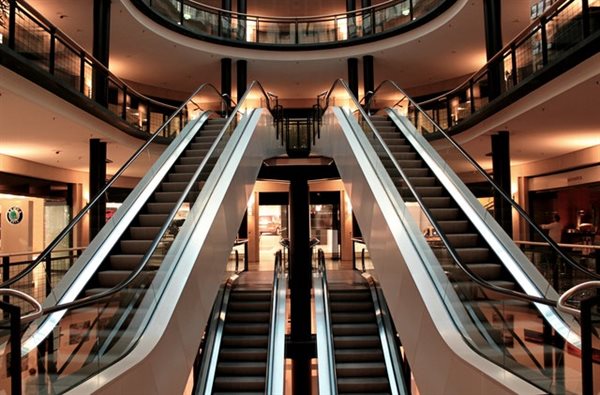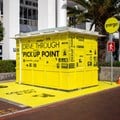Has the time finally dawned on us? Is the long-imagined retail apocalypse on our doorstep? If you have entered a shopping mall recently, you might begin to think so. Perspex barriers, mask-clad customers and social distancing demarcations have become the norm while the evident fall in foot traffic has retailers across the country fearing for the worst.
The impact of the Covid-19 pandemic continues to have a remarkable effect on the way we shop and interact with retail spaces. But it is not the end for shopping malls in South Africa.
Though the rise in e-commerce has taken off during the pandemic, the adoption of online shopping in South Africa still lacks in comparison with international figures.
There are a great many reasons we can attribute to this phenomena, like low internet penetration and the challenges of home delivery in rural areas, but there is one specific reason I’d like to highlight, and that is the fact that South Africans love shopping malls, so much so, that we have the 6th most shopping centres in the world (while we are only the 25th most populous country). This suggests that shopping malls are the main retail channel in the country.
The predilection Saffas have for shopping malls is not likely to be going anywhere, even with strict lockdown measures in place. These large retail spaces hold specific community value for us as they are safe, convenient spots that many spend hours in whether they are shopping, grabbing lunch, going to the movies, or all of these combined.
However, now that consumers are forcibly reassessing how they interact with retail, new habits and expectations are likely to be formed. What does this mean for retailers? As futurist Daniel Silke highlights, shopping malls must be agile, quick to respond to change, if they are to survive the lockdown and the drop in sales that will follow.
From drive-through collection to the rise in omnichannel shopping experiences, here’s how the Covid-19 crisis is fast-tracking the future of shopping malls.
Radical transformation of retail already underway
The government-mandated transformation retailers have had to undergo may have permanent effects on the way consumers shop. With the risk of infection ever on consumers’ minds, retailers adopted new strategies to ensure their continued sales. These include strict hygiene protocols, like face shields and sanitiser stations, but also the opening up of new sales channels, like online shopping and drive-through experiences.
The convenience of these channels could be habit-forming, meaning consumers who have been reluctant to catch on to the e-commerce wave will likely become devout converts even after the pandemic subsides. For instance, 75% of consumers who tried kerbside delivery in the U.S. during Covid say they will continue to use it.
Similarly, Pargo’s Drive Through Pickup Point at the V&A Waterfront is spearheading the adoption of kerbside collection in South Africa as a safe, convenient, alternative way to shop.
Recentering retail for the post-Covid consumer
Consumers are starving for interaction. Anyone who has experienced the isolating effects of lockdown can attest to this claim. With lockdown restrictions lessening, I believe this need will spark a mass resurgence in shopping malls as destinations for social interactions, personalised shopping experiences and unique in-store offerings.
Retailers need to start thinking of their stores as experiences rather than simply being about products. Consumers may become accustomed to the exclusivity they experienced during lockdown resulting from the limit stores had to implement on the number of patrons allowed in their premises at a given time.
Generation Z consumers (currently aged between 14 - 24) are even more likely to adopt these habits as their desire for uniqueness informs their purchases and fuels their need to be treated as individuals, a notion supported by a recent A.T. Kearney survey which reported that 81% of Gen Z consumers prefer to make purchases in-store. Retailers can capitalise on this interest by offering consumers the ability to book specific time slots or tickets to receive a more personalised shopping experience, not unlike the system currently used by Virgin Active Gyms implemented during lockdown Level 2.
Jessica Vredenburg and Megan Phillips 24 Jul 2020
Brick-and-mortar stores have several offerings the digital-space can’t replace, and these features can be emphasised to attract the experiential shopper. These features can be as simple as offering exclusive in-store products, having a space for pop-up shops, or the convenience of trying products in-store.
The needs and wants of consumers remain the same, but how they are serviced is likely to change with the new-found convenience of online shopping being the driving force. For this reason, retailers will have to integrate their offline and online presence into what we call a seamless omnichannel retail experience. For retailers, this means streamlining their points of contact, supply chains and logistics strategies to offer consumers the most seamless, convenient shopping experience.
A great example of a frictionless omnichannel retail experience would be click and collect in-store. Through this method of retail, consumers shop online and collect their orders in-store. It expedites the entire purchasing process through digital augmentation seeing as the products are already decided on and paid for upon collection. It also offers them the personalised experience of interacting with retail staff and physically trying the products in-store while also giving them access to a simple returns process.
What will the mall of the future look like?
Westfield London, one of the global leaders in shopping mall innovation, recently revealed their vision for the future of shopping malls in a panel discussion, titled Destination 2028, led by several futurists. According to their plan, the notion of the shopping mall as a destination will be further emphasised and the mall of the future will integrate the latest technologies to facilitate a seamless, more personal customer experience.
Smart technology will crop up in all areas of the future shopping centre. Smart changing rooms are just one of the exciting features that are likely to head our way soon. It is imagined that these magic mirrors will project a virtual reflection of shoppers wearing new garments without them having to try them on. Similarly, smart restrooms will be able to detect hydration levels and nutritional needs, directing consumers to the food court for further purchases.
Westfield also predicts that artificial intelligence will be used to personalise customers’ experience in shopping malls. It is believed that retina scanners that recall previous purchasing habits will be placed at the entries of shopping malls to offer consumers shortcuts and simple routes to easily navigate the centre and meet their goals.
Classroom retail is already gaining traction and will grow even more popular in the future. Consumers are increasingly becoming interested in the brands and products they buy, which allows retailers to connect with their customers through education. Imagine learning how to cook with the ingredients that you bought in the supermarket or how to arrange flowers in a flower store as part of your purchase. In this way, shopping centres will become spaces where consumers can learn new skills and develop social networks.
Innovation will also come to the logistics terrain with drone delivery touted as the next big thing in retail. Picture the luxury of shopping in a store and having your purchases delivered via drone before you even get home, leaving you free to window shop to your heart’s desire. With Amazon’s airship delivery already patented, we’ll likely see drones carrying parcels overhead much sooner than we think.
Despite the myriad of unidentified flying objects coming to an airspace near you, this is not the apocalypse of retail. Rather, it is a recentering fueled by technology, changing habits and a growing emphasis on experiential shopping. As such, malls won’t be going anywhere. Their location, sheer magnitude and brand power will keep them relevant well into the future; however, their responsiveness to change will likely be the key to their success.The future of the shopping mall will not be decided by a so-called competition between online and offline retail, for the modern customer is online and offline at the same time. Retailers who realise this and leverage it to make the shopping journey as seamless and convenient as possible will be best equipped to service the future consumer.





































